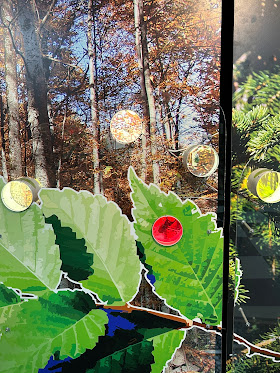FUN and можело
I've just finished up a fantastic week of workshops with museum folks and independent cultural professionals from Bulgaria. This first iteration of the "MUSA Academy" was sponsored by the America for Bulgaria Foundation (ABF) and I was joined by my brilliant teaching partners, Jamie Lawyer, and Christina Ferwerda.
Although I'm still processing all the wonderful things that happened and all the cool ideas that popped up this week, two things stand out right now -- the very American idea of FUN and the Bulgarian concept of можело (pronounced mozh-eh-low.)
можело is built on the notion of "we can do this" or "this is possible" but I also think about the word as a way of focusing on "starting somewhere" rather than just completely giving up due to challenges involving money and time, or institutional support.
An interesting example of an "old school" museum that has incorporated both fun and можело is the National Museum of Natural History located in the capital city of Sofia, Bulgaria -- specifically the exhibition gallery containing insect specimen cases.
As you can see from the photo below, the left side of the gallery is dominated by row after row of glass-fronted cabinets containing thousands of mounted insect specimens arranged in taxonomic groups. It feels both overwhelming and daunting.
However, if you turn to the right, a different vista beckons you through a set of insect-themed graphical curtains.
Inside this space is a fun gallery that puts insects found around Bulgaria in context by using large, colorful graphics representing different insect habitats.
Throughout the space, you can also take closeup looks at representative insect specimens displayed in acrylic tubes.
Anchoring each section is a fanciful portrait of another representative insect species (including its scientific name!) like the dragonfly painting at the top of this post or the honeybee below.
While I wish the entire insect gallery was more like this one area, I realize that shifting a 130-year-old museum is a massive task. However, I give the staff, designers, artists, and fabricators kudos for finding a way to insert a bit of FUN and можело into the National Museum of Natural History.
P.S. to find out even more about FUN in museums, check out this wonderful YouTube interview with Christina Ferwerda and her colleague Helen Divjak!
Paul Orselli writes the posts on ExhibiTricks. Paul likes to combine interesting people, ideas, and materials to make exhibits (and entire museums!) with his company POW! (Paul Orselli Workshop, Inc.) Let's work on a project together!
If you enjoy the blog, you can help keep it free to read and free from ads by supporting ExhibiTricks through our PayPal "Tip Jar"


















